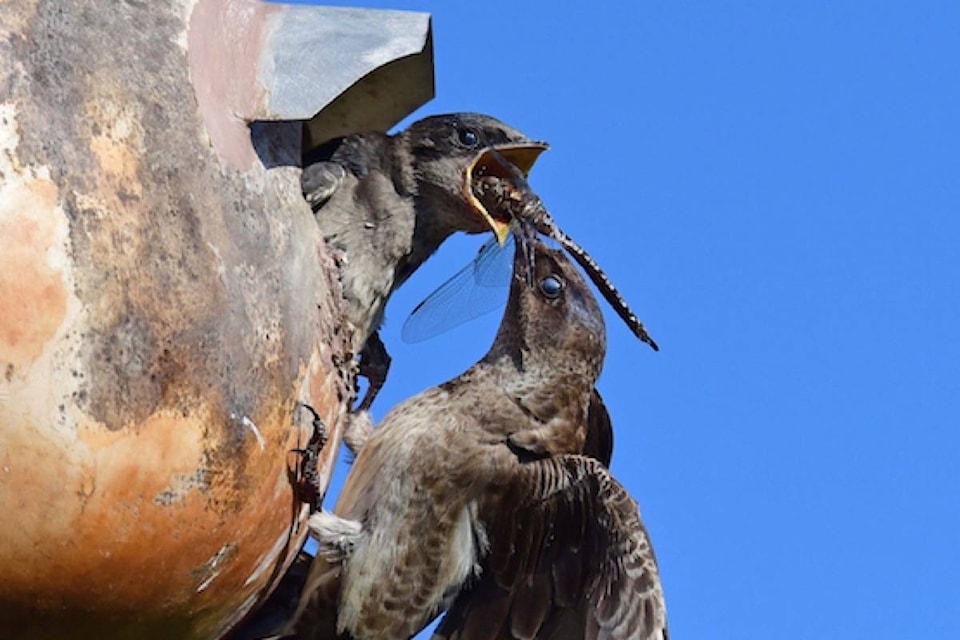Over the years, I have observed birds and bird behaviour during bad weather, including cold, heat, drought, wind and rain.
I find it incredible that they can survive the many harsh conditions that befall them. Yet, except when dealt the most extreme conditions — such as the weather event of July 17 to 19 — birds are remarkably hardy and resilient.
As we all know, the past weeks have been unseasonably cold and wet. While these conditions have been good for crops and gardens, they have been challenging for our aerial insectivores — swallows and martins that feed on the wing.
These birds require flying insects, which are active only when it is warm and dry.
While the continental Purple Martin population is experiencing an overall decline, numbers seem to be stable or increasing in Alberta. Sadly, they are in free-fall decline in Canada’s eastern provinces.
At Ellis Bird Farm, we have worked hard over the past years to provide a pesticide-free site as well as several well-designed and placed apartment-styled houses for them.
Our population has increased over the years, with this season starting out with a promising 99 pairs (out of 113 available cavities).
We were a bit concerned about the nesting success during an early June nest check when we removed about 40 unhatched eggs from the nests.
We monitored a couple of apartments over the next weeks, but made the decision to not bother the birds again, since the adults needed to be hunting and feeding their hungry broods during the occasional periods of hot, sunny weather.
We did a complete nest check on the afternoon of July 17. While the numbers were down from last year, we were relieved to note that there were some warm eggs, some newly hatched young, and lots of plump nestlings of all ages. A few clutches had already fledged.
We had just finished cranking up the last house when the temperature suddenly dropped and the heavy rains started. The next 48 hours were brutal, with continued bouts of torrential rain, howling winds and unseasonably cold temperatures.
Daytime highs hovered between 8 and 10 C. Sadly, this weather event hit just when many of the Purple Martin young were in the six- to 13-day-old range.
It is at this age when the females stop brooding them, but they aren’t sufficiently feathered to be able to withstand prolonged cold periods.
We were advised by Del and Debra McKinnon of the Purple Martin Conservancy on July 19 that a weather kill had occurred due to these extreme conditions.
So, with trepidation, we did another complete nest check on July 20. As predicted by the conservancy, we encountered nest after nest of dead young.
Most of the young were quite plump, so they had obviously succumbed to hypothermia, not starvation. However, there were a few older ones that appeared to have starved. In these cases, perhaps only one adult was feeding and they simply couldn’t find sufficient food.
In other cases, the adults may have abandoned their brood in order to ensure their own survival.
In the end, we counted 71 nestlings that had died as a direct result of this weather event, about 25 per cent of the crop and the most catastrophic loss since Purple Martins reappeared at Ellis Bird Farm in 1999.
Reports from other martin landlords around central Alberta indicate similar losses. (If you are a martin keeper, the conservancy recommends that all houses be checked as soon as possible, so all dead young can be removed.)
On the upside, the good folks at the conservancy have told us that a bumper year often follows a loss such as this. So, we have our fingers crossed that the Purple Martin population will enjoy a banner year in 2020.
Myrna Pearman is the biologist and site services manager at Ellis Bird Farm. She can be reached at mpearman@ellisbirdfarm.ca.
